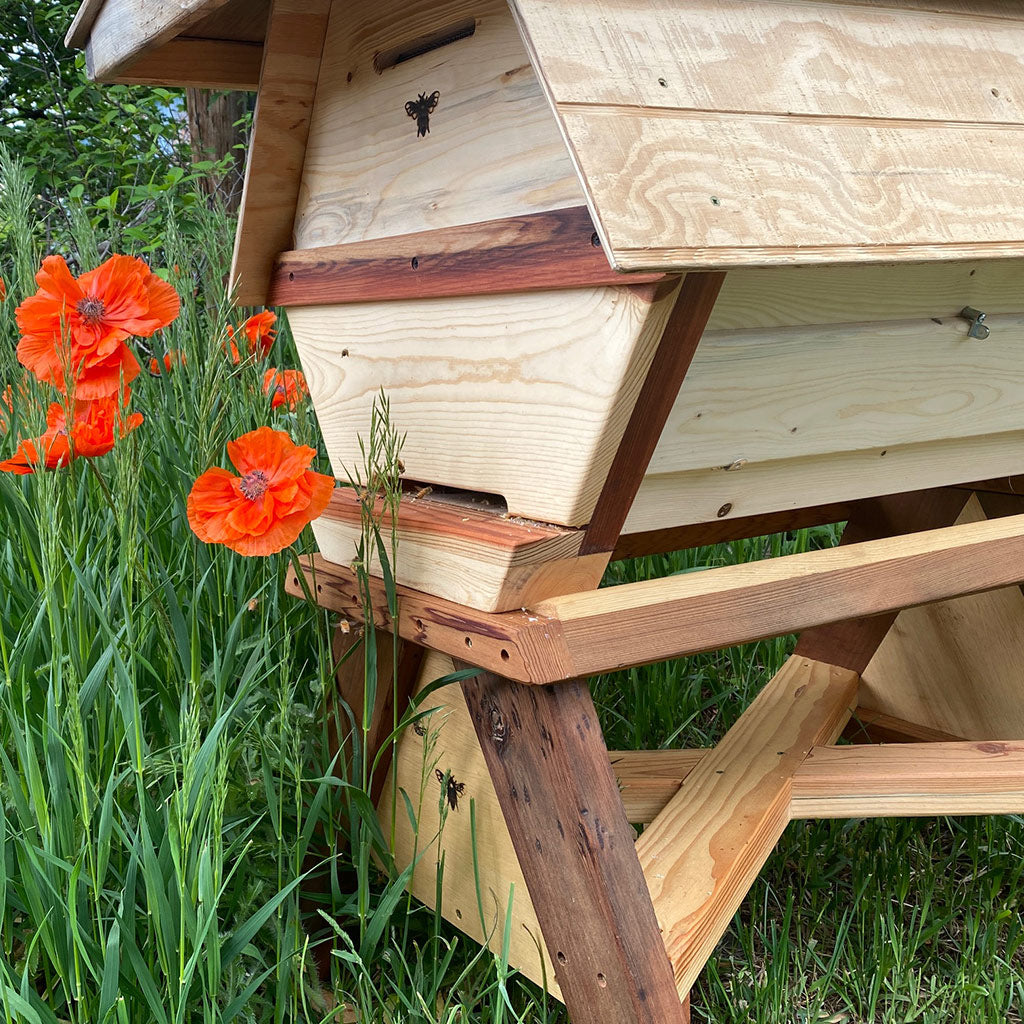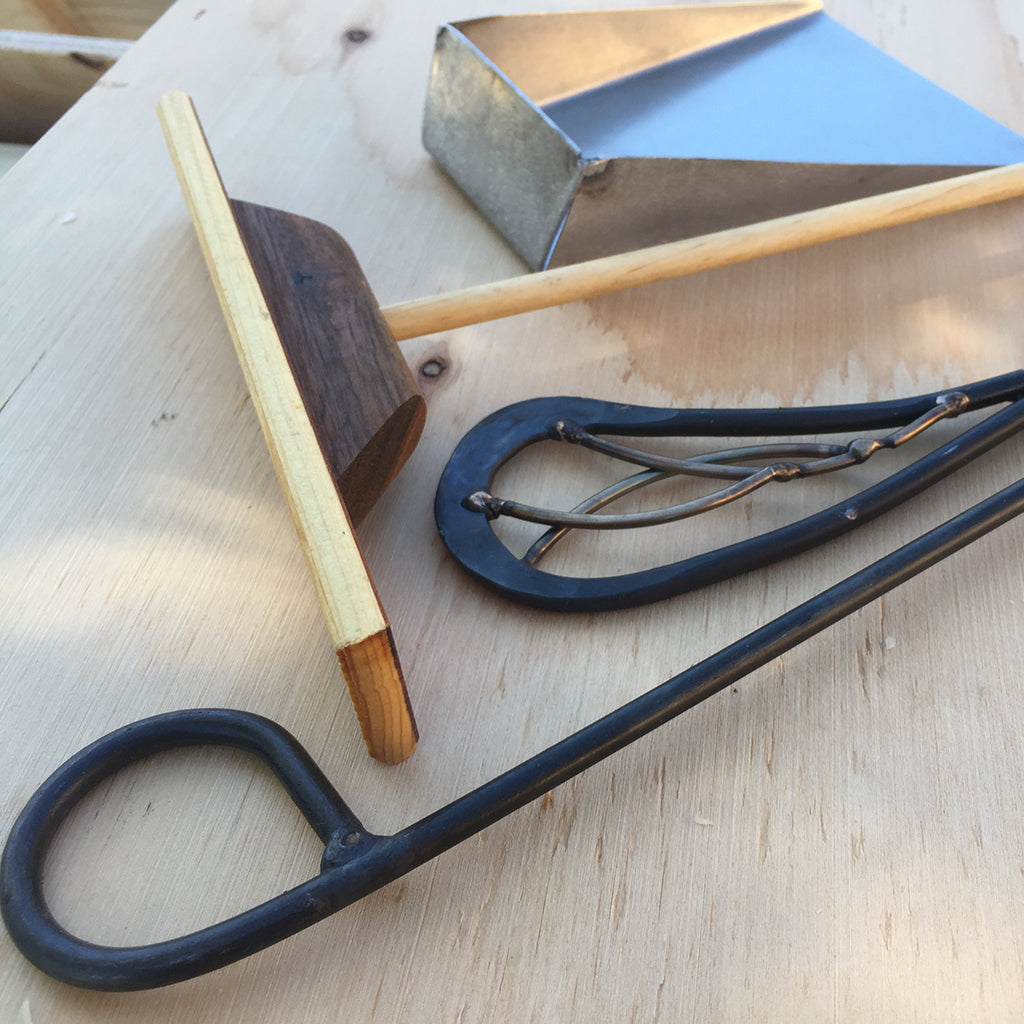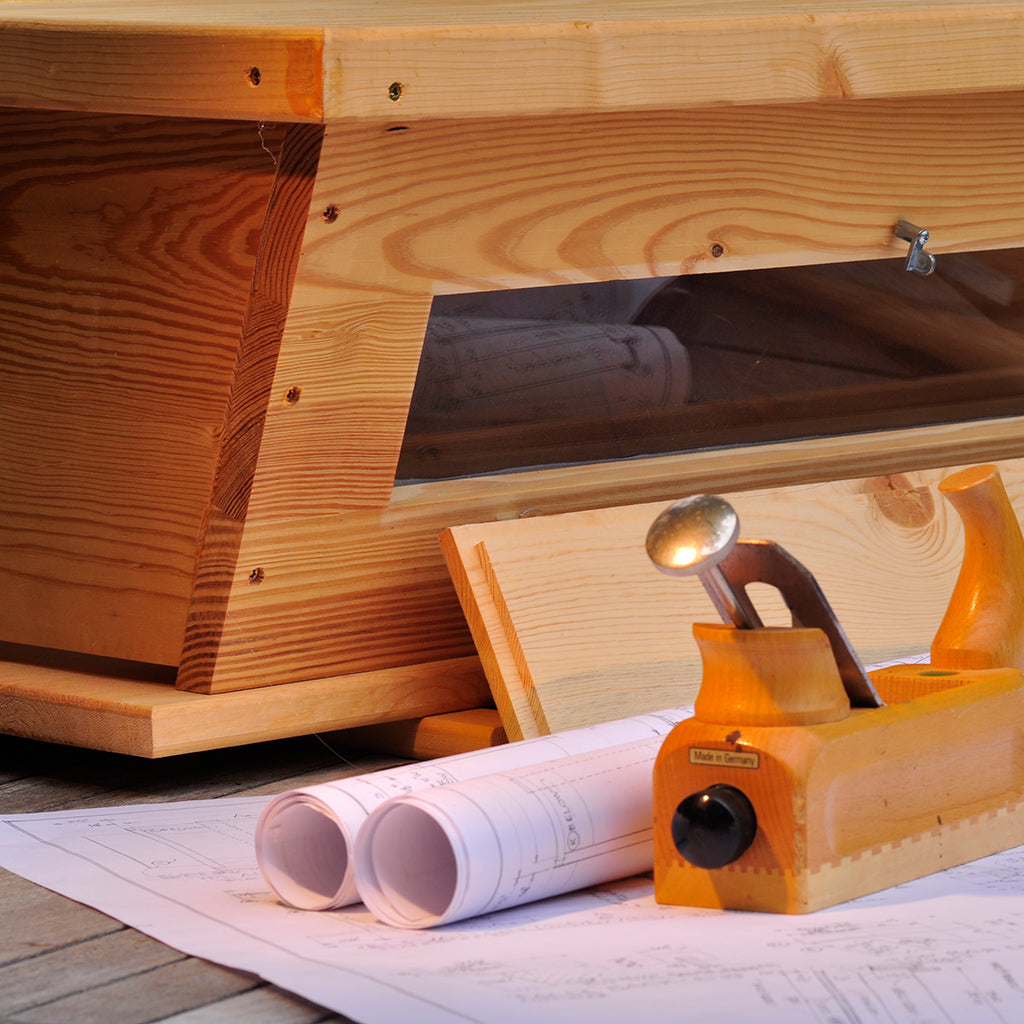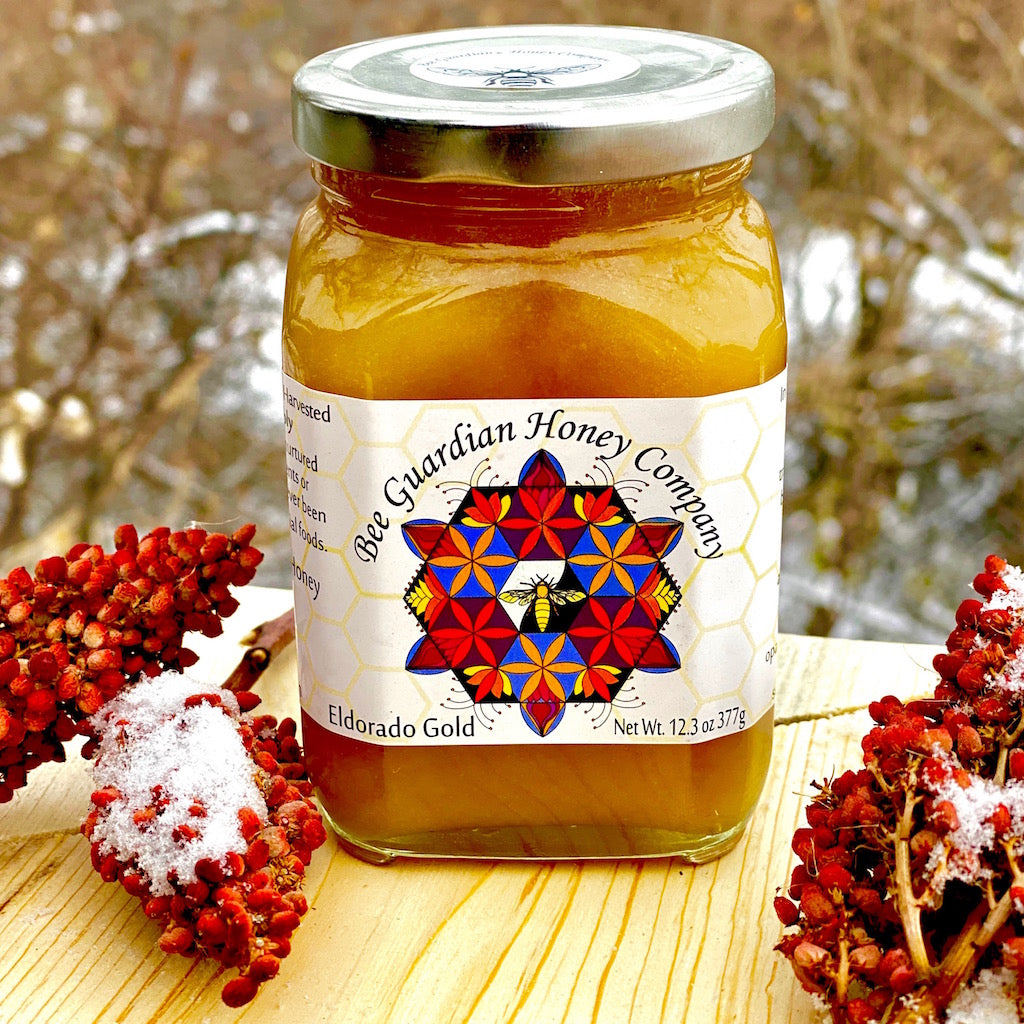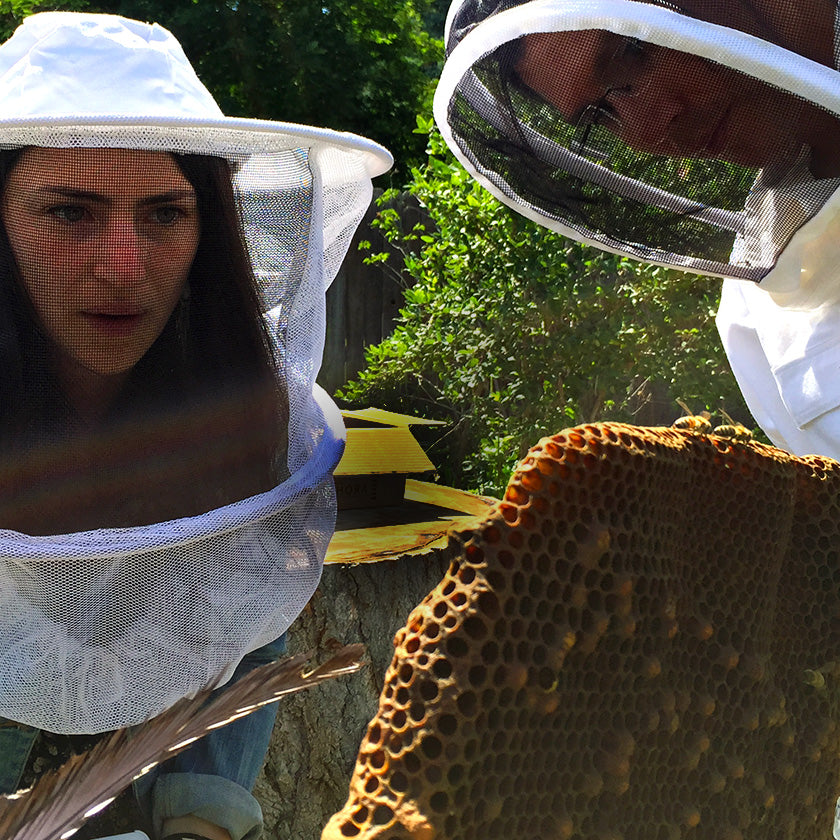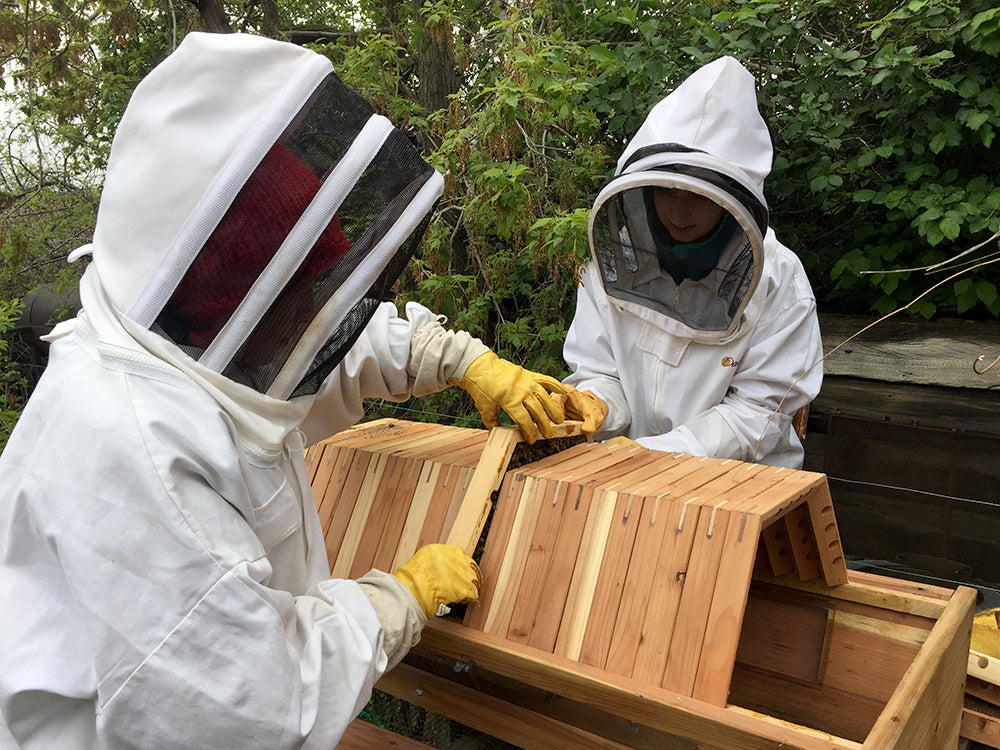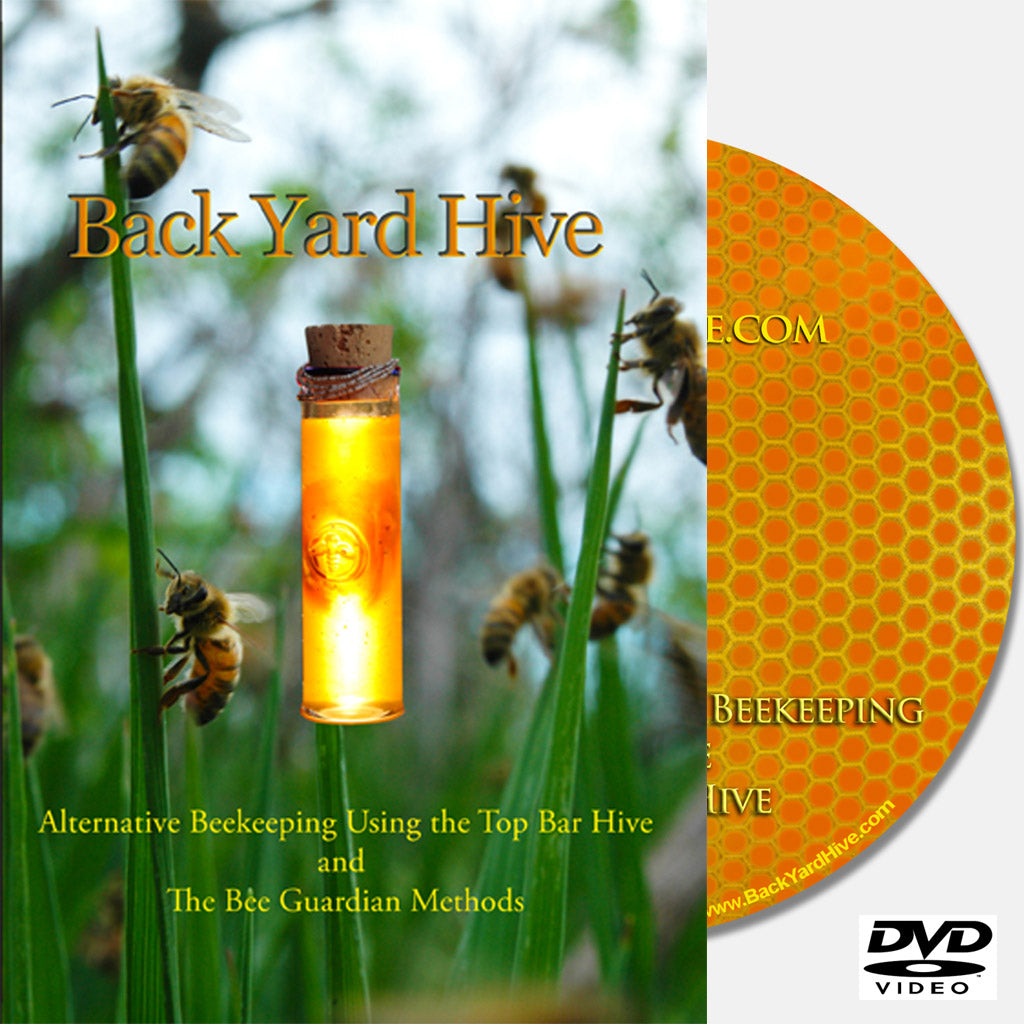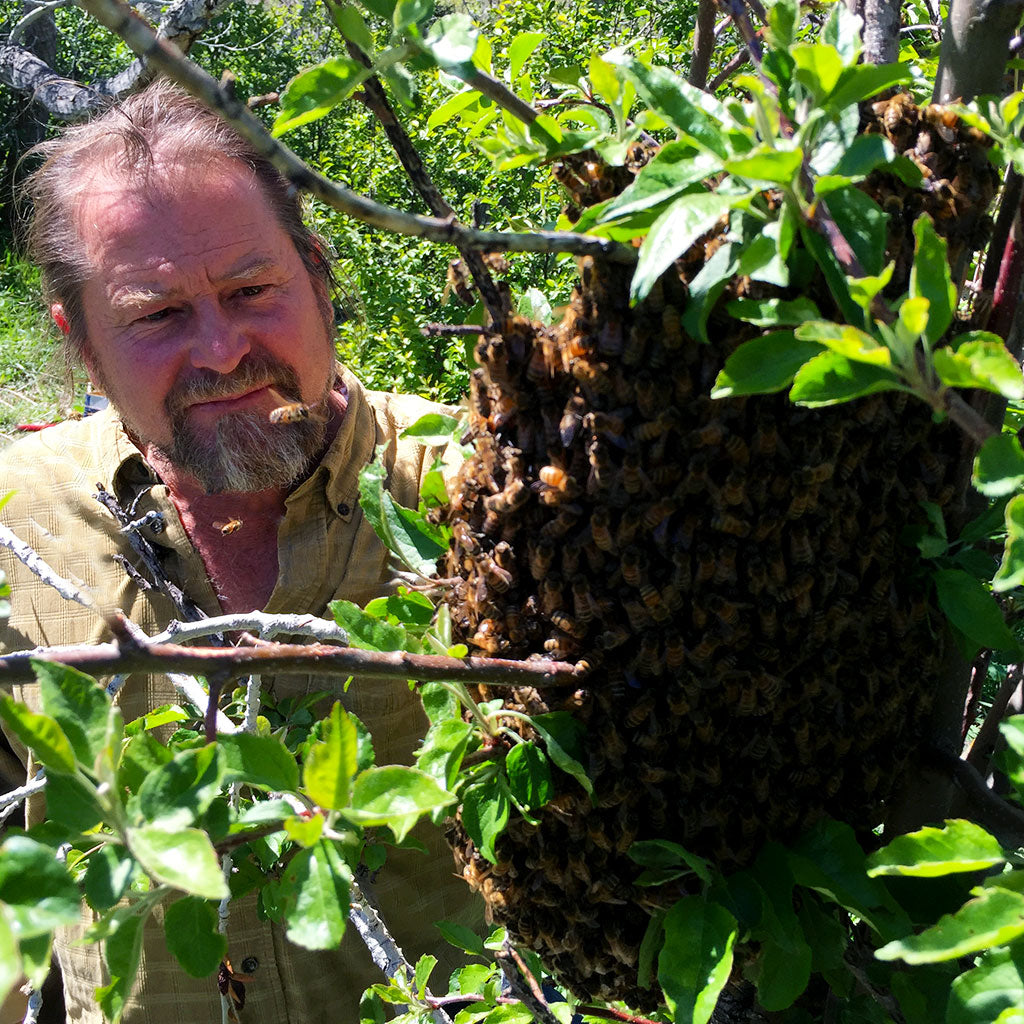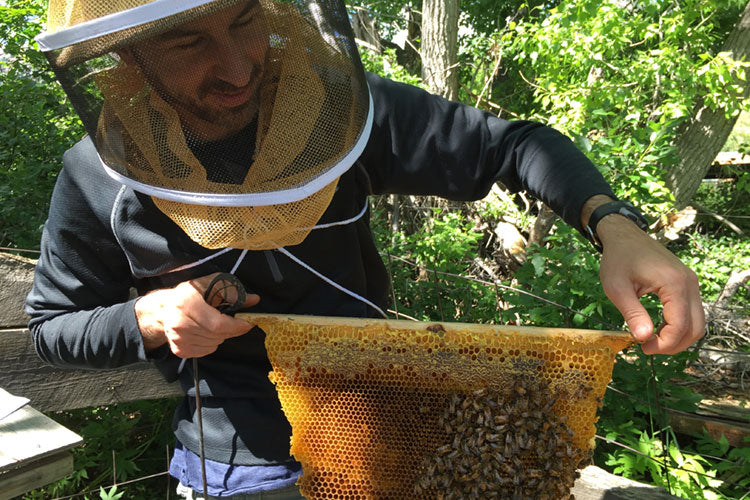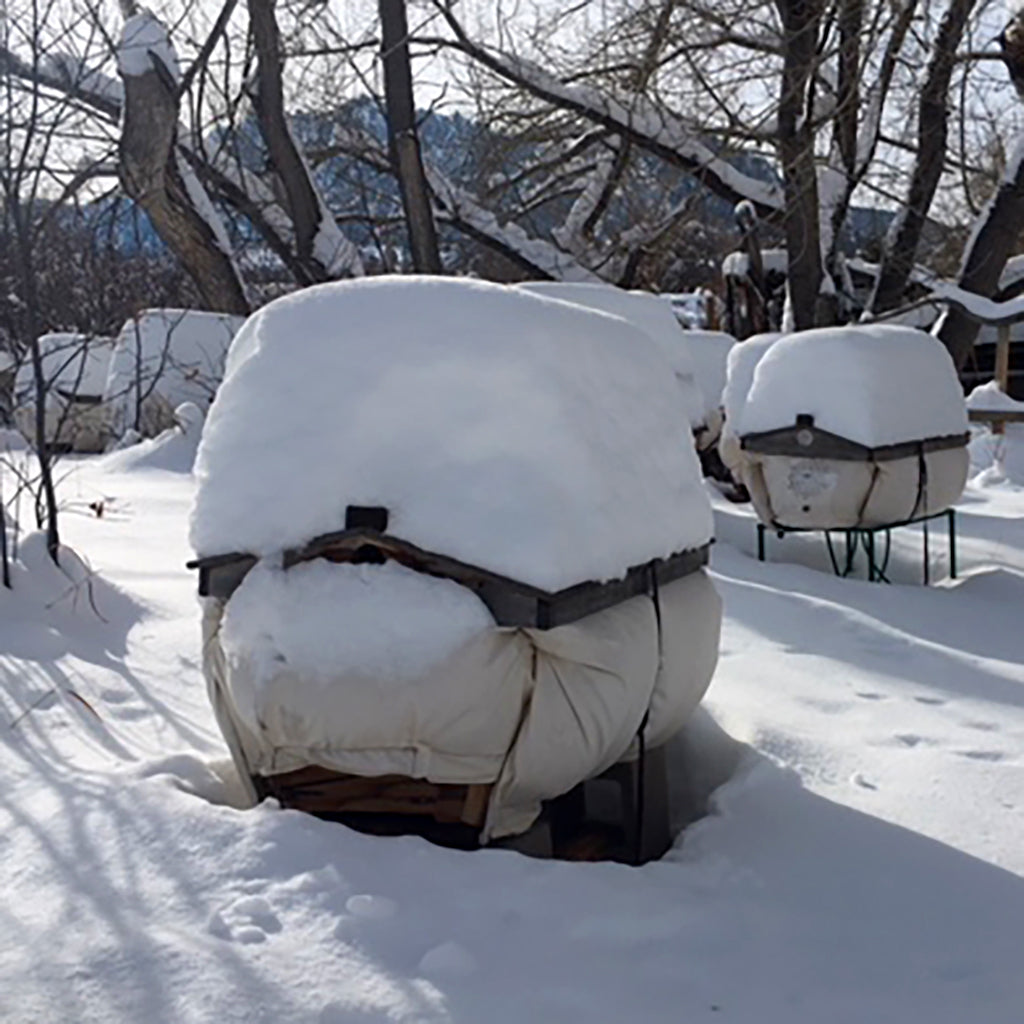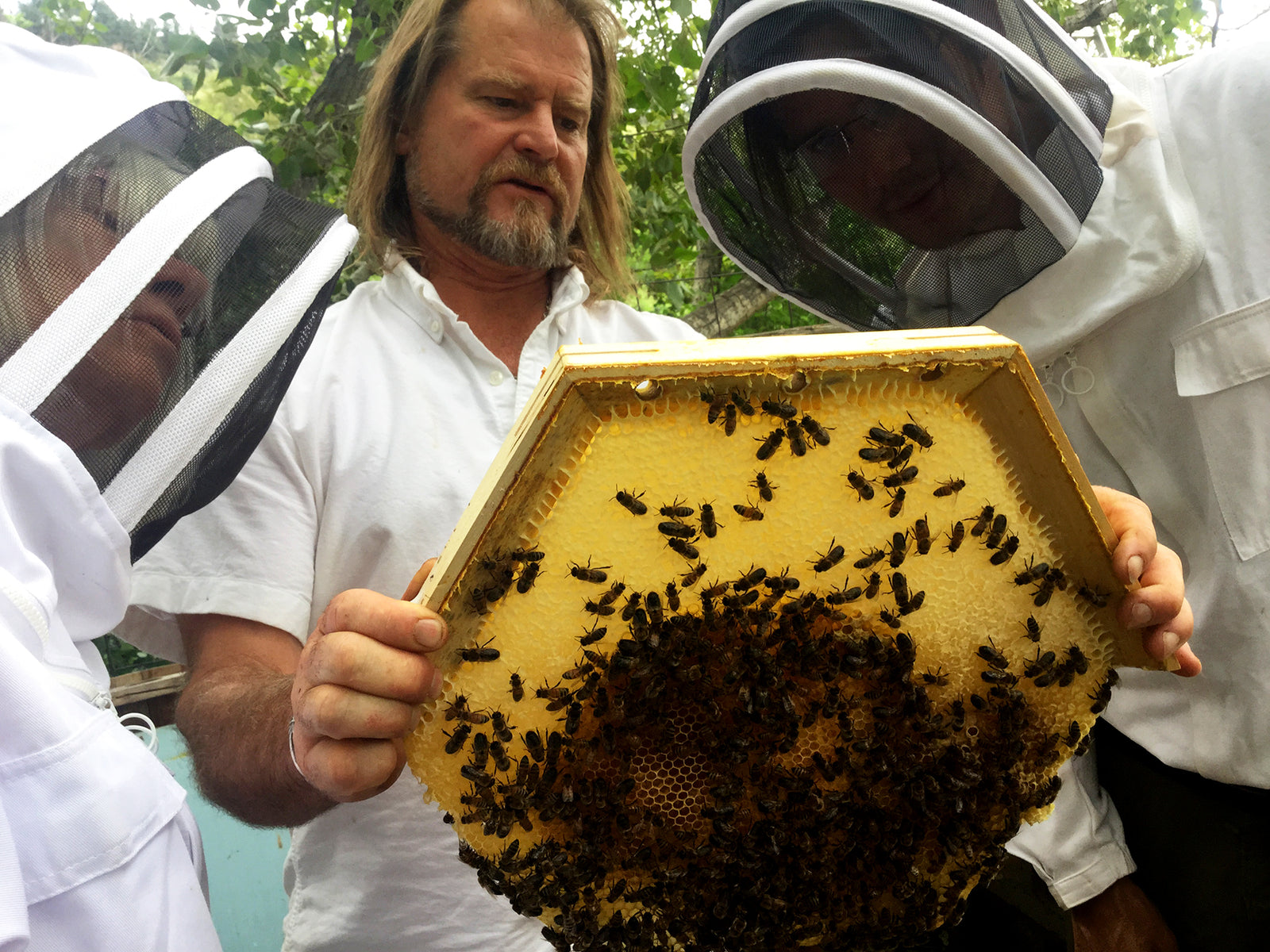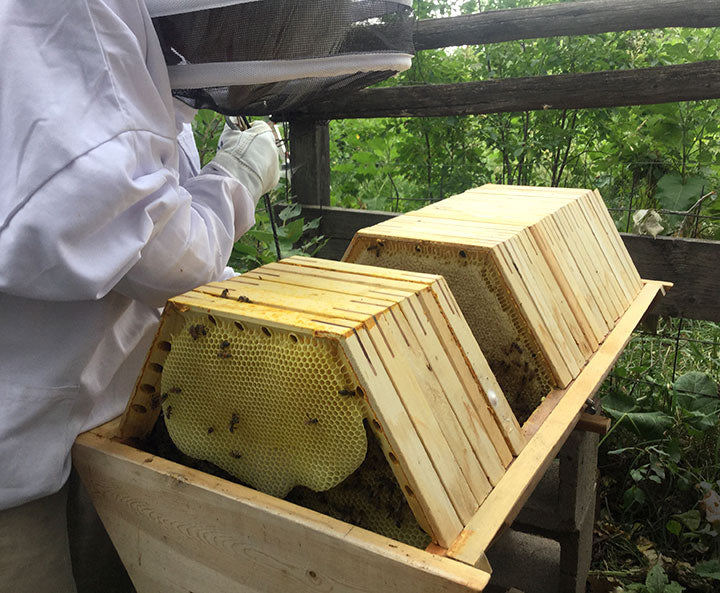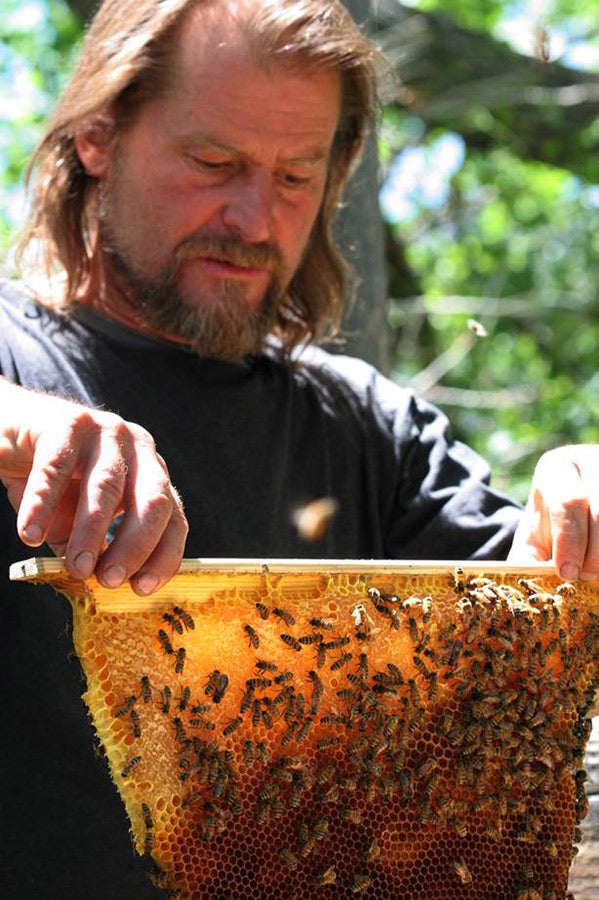The Golden Mean and BackYardHive Top Bar Hive Nuc (short for nucleus)
A Nuc is a hive in miniature and can house a functioning colony of bees. Our Nuc is about half the size of our full hive. The Nuc can be a temporary home for the bees, whether you just caught a swarm or made a split from your hive. The intent of the temporary home in the nuc is to transfer the colony from the Nuc into a full hive, so that the colony has time to fully fill out a regular size hive.
We have been using these small little mini hives for many years and for many uses, but never realized how MUCH we use them, they just have become a part of our bee world. Well, this year we hosted Bee Doctor training workshops here in Eldorado, where we basically open up our world of “bee helping” to the participants.
The Bee Doctors got to see how we put these little hives to use and they all wanted to incorporate it into their practice! This is when we saw how important this mini hive is to what we do. We have, in use during the bee season, about 20 of these mini hives and use them all season long and... Well, we never really thought about how useful it is to have one of these around or that anyone else would want one. Most of the new Bee Doctors wanted to have one, so we got a bunch of them made and they are now available
The beekeepers call their smaller version of this kind of a mini hive a Nuc, short for Nucleus, but a mini hive can be used for so much more. Traditionally a Nuc is used to create a small colony of bees, by taking brood and honey combs from a healthy hive and putting them into the Nuc. Then a bought or reared queen is put into the Nuc. Once this Nucleolus colony gets established, the beekeeper will sell the Nuc, which is then transferred into the awaiting hive. A traditional nuc has 5-8 frames so it is more than just a package of bees and a queen, there are also frames of brood, pollen and honey. This is a faster way then installing a “package” of bees to get a colony up and running.
How the Nuc can be utilized during the bee season
- Swarm catching
- Store combs when working on your hive
- Transferring combs to another hive
- Splitting a hive
- Overwintering a small swarm or hive split
Catching swarms in the Nuc
We use our Nuc to catch swarms. The big advantage is that if the bees have to be left in the Nuc there is no problems getting the developed swarm into a full hive. If a swarm is captured in a cardboard box and either we cant find a home for them right away or the weather turns bad, we can leave the bees in the Nuc. A swarm will immediately begin to draw out comb in what ever container they are in. If this happens to be in a cardboard box, their new combs are destroyed when shook into the hive. After being left for a week in a cardboard box, the moisture and the weight of the new collected honey starts to collapse the box. With the swarm in a Nuc, the bees simply draw out combs on the top bars and after several weeks, the bars can be easily transferred into the full hive.
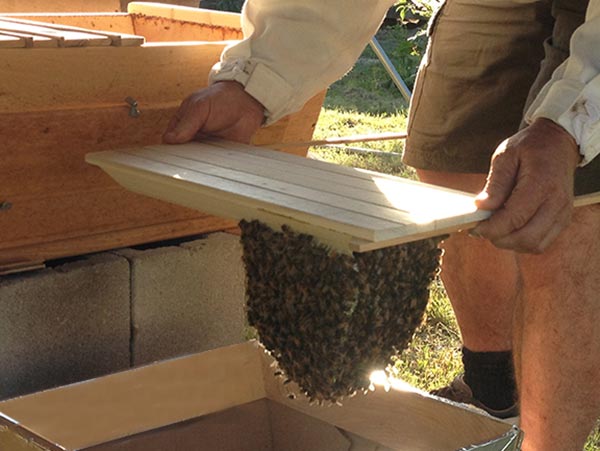
Top bars from the Nuc with comb and bees being transferred into a full hive. This group of bees was a small swarm that we waited to for them to build some comb and ensure they had a queen before transferring the bees into a full hive.
Assessing a swarms health and combining swarms
We usually capture 85 to 90 swarms a year, of those many of them are either very small or we are uncertain if they have a queen. So rather then give the swarm to someone else to discover the disappointment, we will put the swarm in question into the Nuc and watch them carefully. In a short time we can see if there is a laying queen. We keep the Nucs all together in what we call the orphanage. Here is another nice use of the Nuc with swarms. If one Nuc of bees has a queen but small numbers and another Nuc is queen-less, we can combine the two Nucs together to make one nice colony.
Combining a little swarm that has a laying queen into a hive that lost its queen.
We do this technique several times a year. Often times during swarming, especially if a hive swarms multiple times, the hive will end up queen-less. So here you have a hive that has a great deal of honey stores, new collected pollen, some brood that hasn't hatched out and they usually have large numbers of work force, but no queen. These bees are most likely done for, unless they have managed to make an emergency queen. Back at the Orphanage we have a tiny swarm that just isn't going to get it together in time, but they have a queen! So we combine the Nuc with the fully established hive. Rather then re-queening with a manufactured bought queen, we are re-queening with what may be very good survivor genetics from the swarm.
The Combiner Board
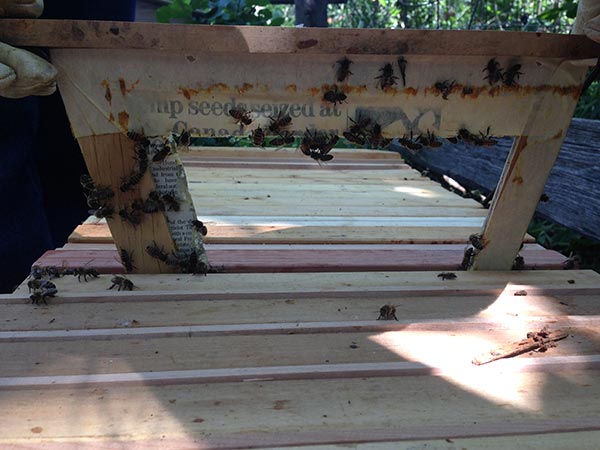
This is a "bee combining falseback" being pulled out of the hive from a successful bee colony combining.
Combining two bee colonies into one hive
The basic combining is done by using a falseback with a large hole cut out of the middle of it and placing it in the middle of the hive between two adjoined colonies. In the case we are talking about, the small swarm you captured in your new nuc and a queenless hive. This false back frame is covered with a thin sheet of newspaper. The bees that would normally fight each other if dumped in with each other, now have several days to get used to the smell of their new roommates on the other side of the thin wall of paper. Soon they chew through the paper and next thing you know they are one big happy family!
Hold combs when working on your hive
Having the sturdy Nuc sitting beside your hive as you are working in it has many great advantages.
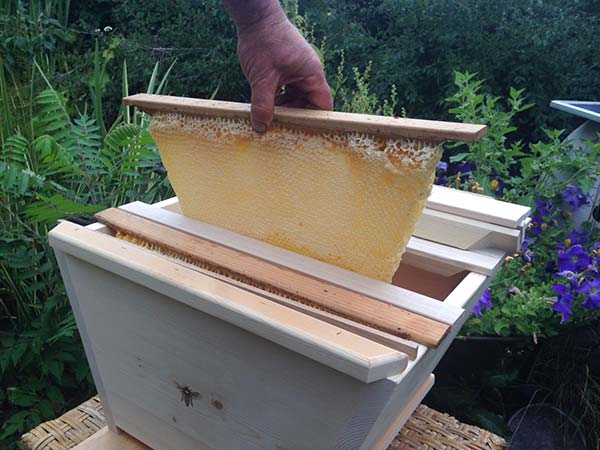
Here are a few more scenarios where you will find the Nuc invaluable
You lift out the falseback and are going to pull a few capped honey combs, but as we know the first couple are delicate, pure white, uncapped honey combs. You want to make some space, so you just take those uncapped combs and put then aside in the Nuc until you are ready to return them to the hive.
You are doing a big spring harvest we call it a “bear snack.” Instead of brushing the bees off of each comb one by one and cutting them off into a bucket, you just take the comb, adhering bees and all and set them aside in the Nuc. Now you have the chance to assess how many combs you are harvesting, before committing to brushing them off. No need filling the air with so many bees. When you are ready to go, you just brush or “herd” The bees off the combs all at once and take your Nuc with all the combs to the kitchen. We used to use a crate to hold the combs while we worked a hive, but the Nuc is so much better because there is a cover. This lid helps keep the bees quite while you work. It also keeps the sun from melting the exposed honey combs. Finally if your are setting aside brood, keeping them covered will keep them warm.
Transferring Brood from a strong hive to a weaker hive or brood comb intended to be used by a queen-less hive to make an emergency queen.
When ever transferring brood you will want to keep them warm. Often times someone will call and ask if we can spare them a couple of sheets of brood to get a weaker colony kick started. We will transfer the brood combs in the Nuc for transport. If you have comb that has one to three day old eggs, another queen-less hive will be able to draw our an emergency queen from your donated brood comb. In this case we transport the brood comb in the Nuc with a towel draped over the comb for extra warmth.
Creating a split of a healthy hive
The basics of a split is to make another mini colony from a colony that is doing great and running out of space. Hear you would set the Nuc next to the hive to be split. Then you begin taking several combs of brood and honeycombs with pollen stores and all the bee's attached and organize them in the Nuc. Either you are hoping for them to make an emergency queen, if so you will need to be sure to transfer brood combs that have one to three day old eggs or larva. If you are doing this during swarm season you could simply select one of the brood combs with a swarm cell or two attached (our preferred method) or you could get a queen from a bee breeder (our un-preferred method) ! After the Nuc is all loaded, set it on top of the mother hive and put a bit of an obstacle at the entrance of the mother hive. What you are trying to accomplish, is to get a good number of advanced foragers to drift into the Nuc. Because the bees that were attached to the combs you transferred were most likely only nurse bees. After a week sitting of on top of the mother hive collecting a forager crew you can, whisk the bees of to a new location at night or early morning. After a week you can bring them back to your place.
Preserving full combs to help a hive that is not going to over winter
We always save a few full honey combs that we harvest in the spring and summer for the fall in case a hive looks like they don't have enough honey stores to over winter. Its a great feeling to be able give one of these colonies a little help. Its also a good feeling to help save a friends bees from the perilous winter storms, by delivering a couple of combs to their struggling colony. Hooray !

Small bee swarms installed into our nucs at one of our small apiaries. We wait to see if the small swarm has a queen and can build up their numbers. We call this our Orphanage !
SaveSave 
